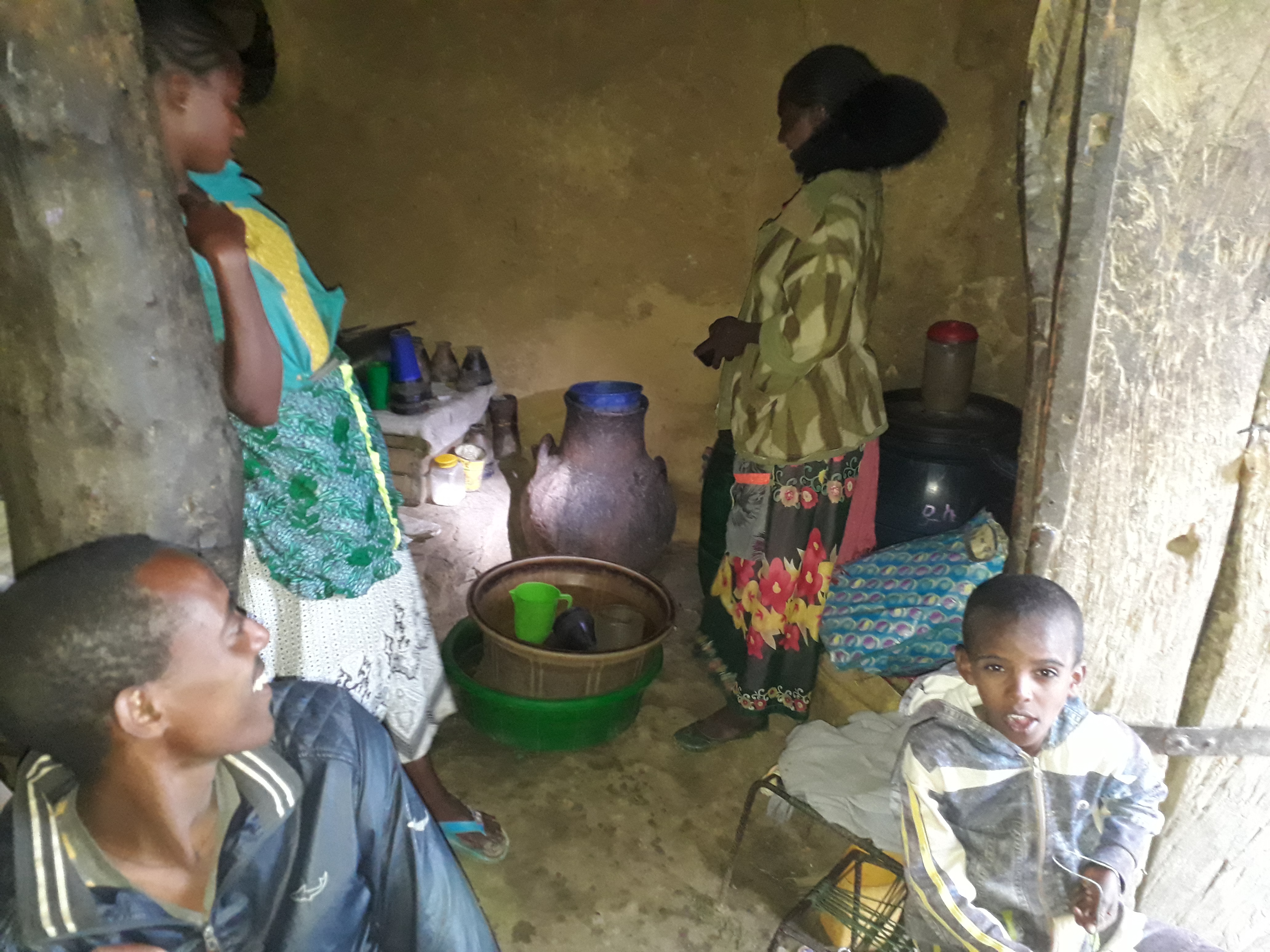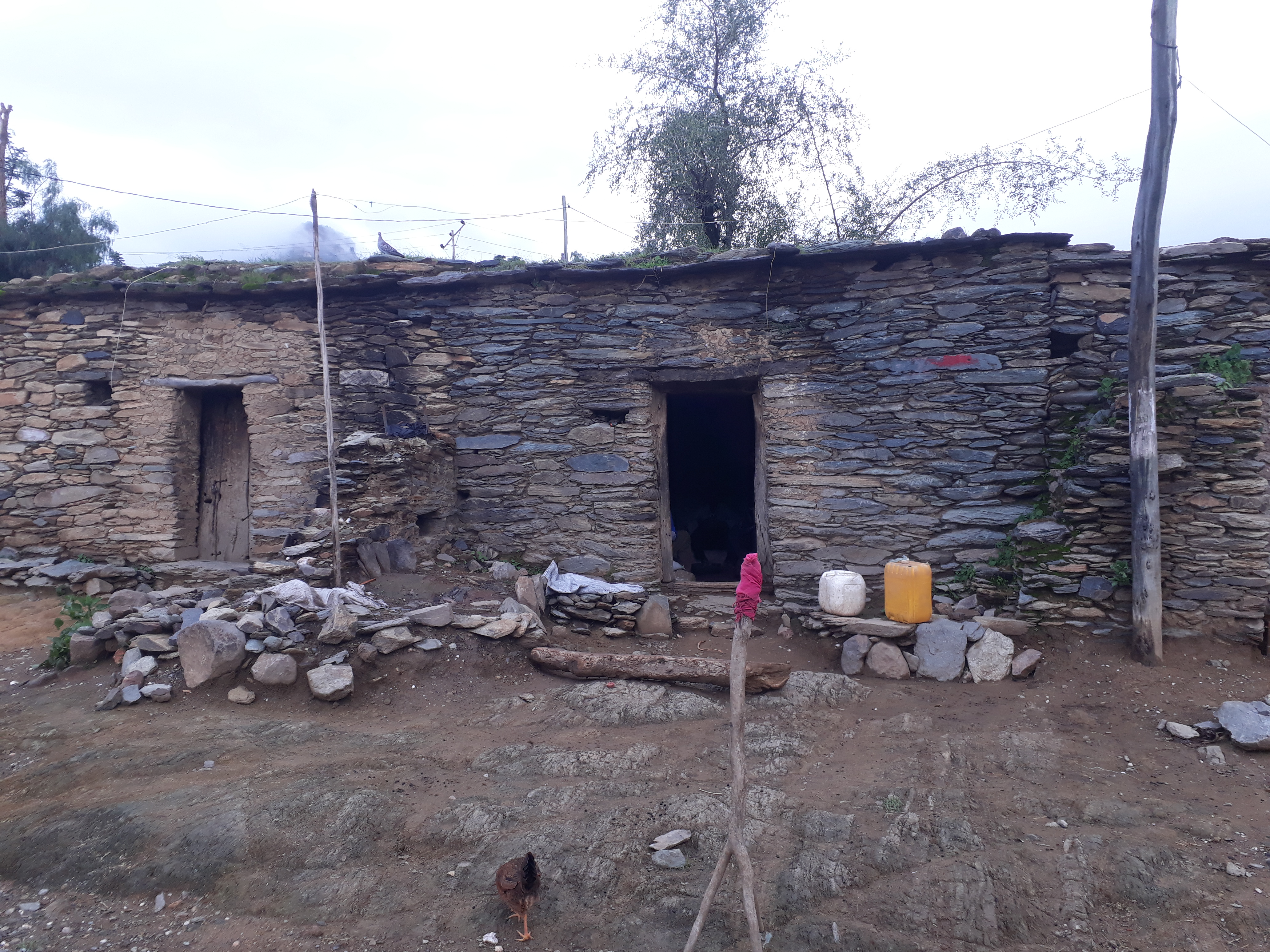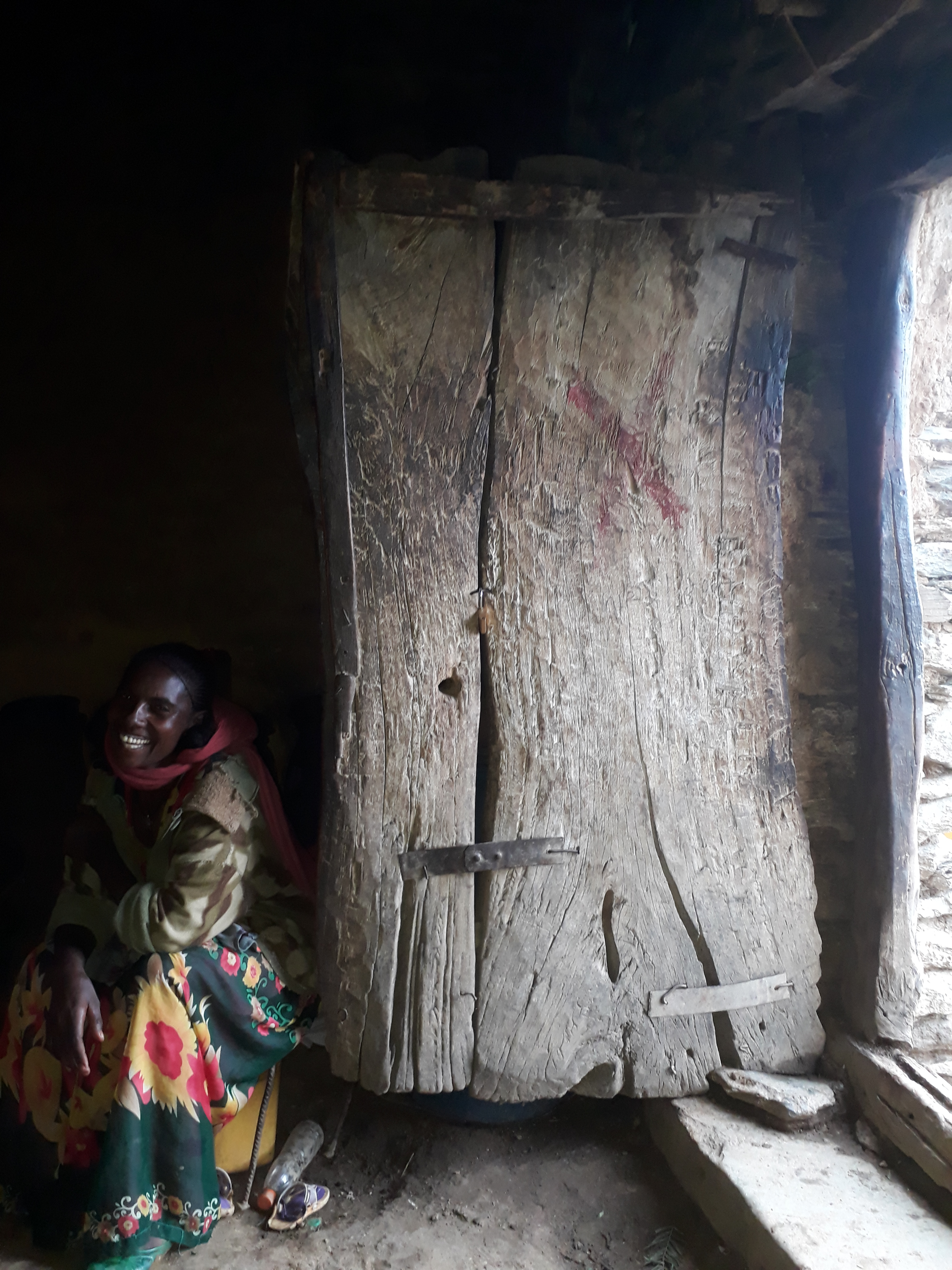Siwa (beer) on:
[Wikipedia]
[Google]
[Amazon]
 Siwa (or Suwa) ( ti, ሰዋ, translit=säwa),
Siwa (or Suwa) ( ti, ሰዋ, translit=säwa),

 When farmers go to plough their land, and even more when threshing their crop, there will always be ''siwa'' for the whole crew of farmers. Typically at house construction sites, the owner of the construction will also serve ''siwa'' to the labourers.
When farmers go to plough their land, and even more when threshing their crop, there will always be ''siwa'' for the whole crew of farmers. Typically at house construction sites, the owner of the construction will also serve ''siwa'' to the labourers.
 Almost every settlement in Tigray holds one or more ''Inda Siwa'', which serve as local bars and which generate off-farm income. Low seats are foreseen around the walls of the room; people drink in group and chat while sipping their ''siwa''. Commonly after some drinks tongues gets loose. If a newcomer joins the group of customers, all will politely welcome him, and invite him to sit with them.
The owner of the business, mostly a woman, tallies the number of consumptions per customer, and may get help from the customers to do her accounting.
Frequently, adolescent boys or girls drop in to sell ''kollo'' (roasted grains) or ''buqulti'' (germinated beans) seasoned with ''senafiche'' (home-made mustard). The consumption of these snacks will stimulate the customer to order additional ''siwa''.
Smaller ''inda siwa'' open only on fixed days of a week, but in any case, all ''inda siwa'' will be open on (the eve of) market days.
Almost every settlement in Tigray holds one or more ''Inda Siwa'', which serve as local bars and which generate off-farm income. Low seats are foreseen around the walls of the room; people drink in group and chat while sipping their ''siwa''. Commonly after some drinks tongues gets loose. If a newcomer joins the group of customers, all will politely welcome him, and invite him to sit with them.
The owner of the business, mostly a woman, tallies the number of consumptions per customer, and may get help from the customers to do her accounting.
Frequently, adolescent boys or girls drop in to sell ''kollo'' (roasted grains) or ''buqulti'' (germinated beans) seasoned with ''senafiche'' (home-made mustard). The consumption of these snacks will stimulate the customer to order additional ''siwa''.
Smaller ''inda siwa'' open only on fixed days of a week, but in any case, all ''inda siwa'' will be open on (the eve of) market days.
 Many ''Inda Siwa'' are established in traditional houses, built in natural stone, with a heavy roof of stones and earth (''hidmo''), a central wooden column (''amdi''), and a wooden door. Visiting ''inda siwa'' is a unique occasion of admiring the traditional house building style of the Tigrayans.
Many ''Inda Siwa'' are established in traditional houses, built in natural stone, with a heavy roof of stones and earth (''hidmo''), a central wooden column (''amdi''), and a wooden door. Visiting ''inda siwa'' is a unique occasion of admiring the traditional house building style of the Tigrayans.
 Siwa (or Suwa) ( ti, ሰዋ, translit=säwa),
Siwa (or Suwa) ( ti, ሰዋ, translit=säwa), Amharic
Amharic ( or ; (Amharic: ), ', ) is an Ethiopian Semitic language, which is a subgrouping within the Semitic branch of the Afroasiatic languages. It is spoken as a first language by the Amharas, and also serves as a lingua franca for all oth ...
: ጠላ, is a beer originating from Tigray. Traditionally home-brewed, ''siwa'' remains locally popular during social events, after (manual) work, and as an incentive for farmers and labourers. Thousands of traditional beer houses (''Inda Siwa'') straddle the Tigrayan urban and rural landscapes.
''Siwa'', the traditional beer of Tigray
In almost every rural household of Tigray, the woman knows how to prepare the local beer, ''siwa'' inTigrinya language
(; also spelled Tigrigna) is an Ethio-Semitic language commonly spoken Eritrea and in northern Ethiopia's Tigray Region by the Tigrinya and Tigrayan peoples. It is also spoken by the global diaspora of these regions.
History and literature ...
. Basic ingredients are water, a home-baked and toasted flat bread commonly made from barley
Barley (''Hordeum vulgare''), a member of the grass family, is a major cereal grain grown in temperate climates globally. It was one of the first cultivated grains, particularly in Eurasia as early as 10,000 years ago. Globally 70% of barley p ...
in the highlands, and from sorghum
''Sorghum'' () is a genus of about 25 species of flowering plants in the grass family (Poaceae). Some of these species are grown as cereals for human consumption and some in pastures for animals. One species is grown for grain, while many othe ...
, finger millet
''Eleusine coracana'', or finger millet, also known as ragi in India, kodo in Nepal, is an annual herbaceous plant widely grown as a cereal crop in the arid and semiarid areas in Africa and Asia. It is a tetraploid and self-pollinating specie ...
or maize
Maize ( ; ''Zea mays'' subsp. ''mays'', from es, maíz after tnq, mahiz), also known as corn (North American and Australian English), is a cereal grain first domesticated by indigenous peoples in southern Mexico about 10,000 years ago. Th ...
in the lowlands, some yeast (''Saccharomyces cerevisiae
''Saccharomyces cerevisiae'' () (brewer's yeast or baker's yeast) is a species of yeast (single-celled fungus microorganisms). The species has been instrumental in winemaking, baking, and brewing since ancient times. It is believed to have been o ...
''), and dried leaves of ''gesho'' (''Rhamnus prinoides
''Rhamnus prinoides'', the shiny-leaf buckthorn, is an African shrub or small tree in the family Rhamnaceae. Commonly referred to as "gesho" it was first scientifically described by French botanist Charles Louis L'Héritier de Brutelle in 1789. ...
'') that serve as a catalyser. The brew is allowed to ferment for a few days, after which it is served, sometimes with the pieces of bread floating on it (the customer will gently blow them to one side of the beaker). The alcoholic content is 2% to 5%. ''Siwa'' has a smoky flavour (originating from the toasted bread) and a typical sourness, bitterness and sweetness ( pH between 4 and 5). Most of the coarser part of the brew, the ''atella'', remains back and is used as cattle feed.
Variants
:* A stronger version of ''siwa'' is called ''meknen'', locally also ''filter'', ''lifter'' or ''tselim siwa'', which may reach an alcoholic content of 6% and beyond :* The softer version, often a secondary brew, is called ''gu’esh'' :* In the highland parts of Tigray and Amhara (often above elevations of 3000 metres), a light version, with the consistency of ''injera
Injera (, ; om, Biddeena; ) is a sour fermented pancake-like flatbread with a slightly spongy texture, traditionally made of teff flour. In Ethiopia, Eritrea, and some parts of Sudan, injera is the staple. Injera is central to the dining p ...
'' dough
Dough is a thick, malleable, sometimes elastic paste made from grains or from leguminous or chestnut crops. Dough is typically made by mixing flour with a small amount of water or other liquid and sometimes includes yeast or other leavening ag ...
is taken particularly as breakfast; it is called ''korofieh''
:* In Amharic
Amharic ( or ; (Amharic: ), ', ) is an Ethiopian Semitic language, which is a subgrouping within the Semitic branch of the Afroasiatic languages. It is spoken as a first language by the Amharas, and also serves as a lingua franca for all oth ...
the ''siwa'' is called '' talla'', and in Oromiffaa
Oromo ( or ; Oromo: ''Afaan Oromoo''), in the linguistic literature of the early 20th century also called Galla (a name with a pejorative meaning and therefore rejected by the Oromo people), is an Afroasiatic language that belongs to the Cushiti ...
and Raya Tigrinya
(; also spelled Tigrigna) is an Ethio-Semitic language commonly spoken Eritrea and in northern Ethiopia's Tigray Region by the Tigrinya and Tigrayan peoples. It is also spoken by the global diaspora of these regions.
History and literatur ...
''farso''
:* ''Myes'', or in Amharic
Amharic ( or ; (Amharic: ), ', ) is an Ethiopian Semitic language, which is a subgrouping within the Semitic branch of the Afroasiatic languages. It is spoken as a first language by the Amharas, and also serves as a lingua franca for all oth ...
''tej
Tej (from pronounced ; ; ) is a honey wine, like mead, that is brewed and consumed in Ethiopia and Eritrea. It has an alcohol content generally ranging from 7 to 11%. It is often home processed and consists of three main ingredients; honey, wa ...
'', is a similar alcoholic brew based on honey and is the Ethiopian version of mead
Mead () is an alcoholic beverage made by fermenting honey mixed with water, and sometimes with added ingredients such as fruits, spices, grains, or hops. The alcoholic content ranges from about 3.5% ABV to more than 20%. The defining character ...
. ''Myes'' is produced and consumed in mead houses (''inda myes'' or ''tej bet''). The brew is typically served in long-necked glass bottles.
''Siwa'' drinking style

Receptacles
The three traditional bowls in which ''siwa'' is served are: clay beakers (''shekhla'' or ''wancha''), hollowedgourds
Gourds include the fruits of some flowering plant species in the family Cucurbitaceae, particularly ''Cucurbita'' and ''Lagenaria''. The term refers to a number of species and subspecies, many with hard shells, and some without. One of the earli ...
, and, less frequently, cattle horns. In recent times, plastic or metal beakers and tins have become much in use. ''Meknen'' is commonly served in one-litre glass bottles.
The ''siwa'' itself is conserved in large clay vases, called ''etriro'', which tend to get replaced with plastic drums. In the hotter lowlands, the ''etriro'' continues to be used, because it has the particularity to keep the brew fresh.
In daily life
 When farmers go to plough their land, and even more when threshing their crop, there will always be ''siwa'' for the whole crew of farmers. Typically at house construction sites, the owner of the construction will also serve ''siwa'' to the labourers.
When farmers go to plough their land, and even more when threshing their crop, there will always be ''siwa'' for the whole crew of farmers. Typically at house construction sites, the owner of the construction will also serve ''siwa'' to the labourers.
Social events
''Siwa'' is traditionally served at every social event (baptisms, marriages, graduations, etc.). Typically the cups are filled up to the edge, and the organiser of the party will make sure that they are refilled before the guest can empty his or her cup.''Inda Siwa'', the traditional beer house
 Almost every settlement in Tigray holds one or more ''Inda Siwa'', which serve as local bars and which generate off-farm income. Low seats are foreseen around the walls of the room; people drink in group and chat while sipping their ''siwa''. Commonly after some drinks tongues gets loose. If a newcomer joins the group of customers, all will politely welcome him, and invite him to sit with them.
The owner of the business, mostly a woman, tallies the number of consumptions per customer, and may get help from the customers to do her accounting.
Frequently, adolescent boys or girls drop in to sell ''kollo'' (roasted grains) or ''buqulti'' (germinated beans) seasoned with ''senafiche'' (home-made mustard). The consumption of these snacks will stimulate the customer to order additional ''siwa''.
Smaller ''inda siwa'' open only on fixed days of a week, but in any case, all ''inda siwa'' will be open on (the eve of) market days.
Almost every settlement in Tigray holds one or more ''Inda Siwa'', which serve as local bars and which generate off-farm income. Low seats are foreseen around the walls of the room; people drink in group and chat while sipping their ''siwa''. Commonly after some drinks tongues gets loose. If a newcomer joins the group of customers, all will politely welcome him, and invite him to sit with them.
The owner of the business, mostly a woman, tallies the number of consumptions per customer, and may get help from the customers to do her accounting.
Frequently, adolescent boys or girls drop in to sell ''kollo'' (roasted grains) or ''buqulti'' (germinated beans) seasoned with ''senafiche'' (home-made mustard). The consumption of these snacks will stimulate the customer to order additional ''siwa''.
Smaller ''inda siwa'' open only on fixed days of a week, but in any case, all ''inda siwa'' will be open on (the eve of) market days.
 Many ''Inda Siwa'' are established in traditional houses, built in natural stone, with a heavy roof of stones and earth (''hidmo''), a central wooden column (''amdi''), and a wooden door. Visiting ''inda siwa'' is a unique occasion of admiring the traditional house building style of the Tigrayans.
Many ''Inda Siwa'' are established in traditional houses, built in natural stone, with a heavy roof of stones and earth (''hidmo''), a central wooden column (''amdi''), and a wooden door. Visiting ''inda siwa'' is a unique occasion of admiring the traditional house building style of the Tigrayans.
Competition by industrial beers
As living standards increase, the wealthier farmers frequently prefer drinkinglager beer
Lager () is beer which has been brewed and conditioned at low temperature. Lagers can be pale, amber, or dark. Pale lager is the most widely consumed and commercially available style of beer. The term "lager" comes from the German for "storage ...
. Industrial breweries have seen this emerging market, and prepared specific brands, targeted at farmers: ''Balageru'' (meaning: "the rural people") and ''Azmera'' beers (meaning: “good cropping season”). Yet, ''siwa'' remains popular; a 2014 music video clip "Siwa Embeytey" documents the production process and the social function of ''siwa''.
References
{{Reflist Ethiopian cuisine Ethiopian culture Beer in Ethiopia Tigray Region Dogu'a Tembien Eritrean cuisine